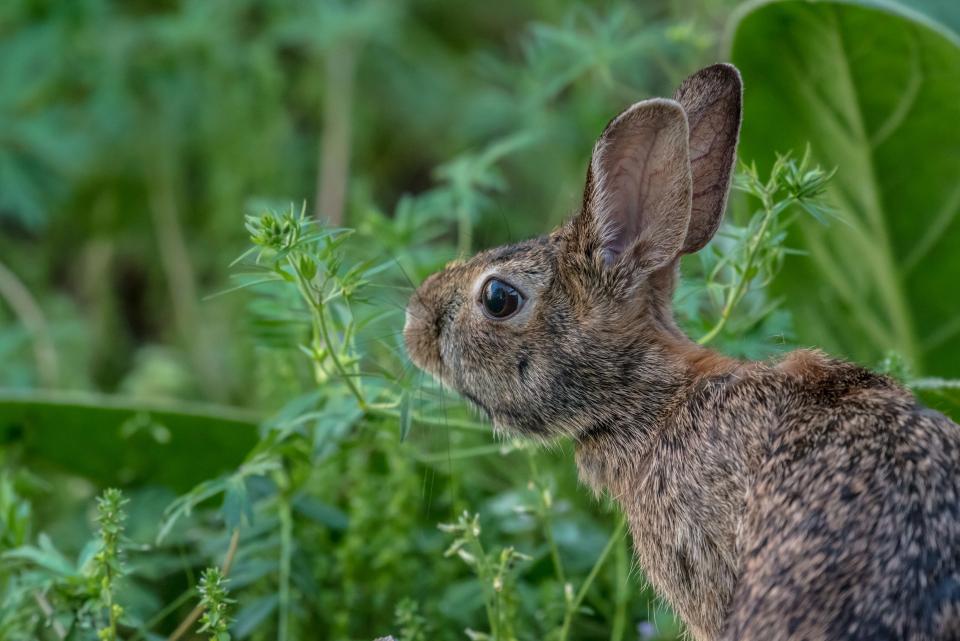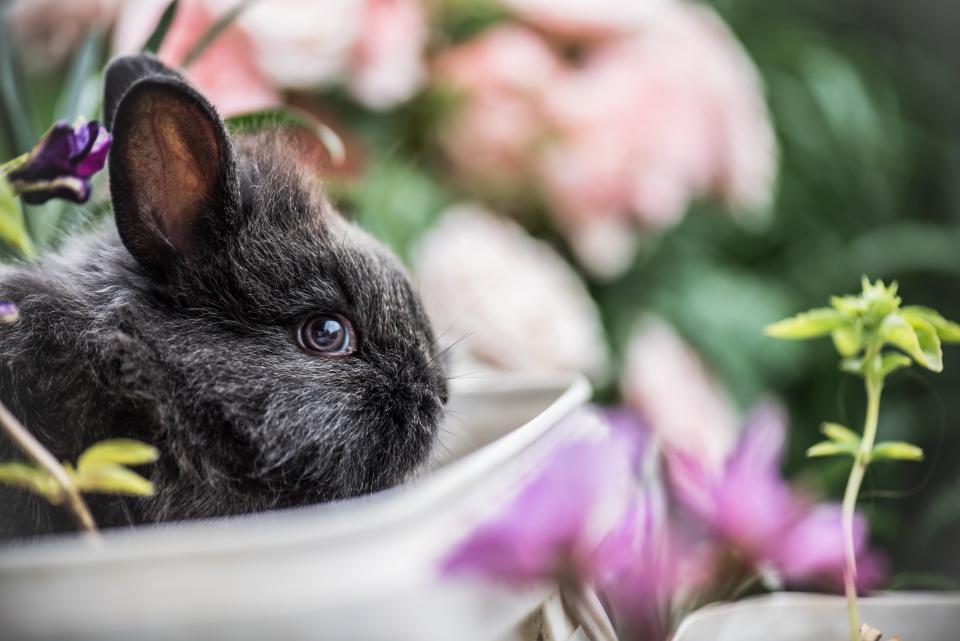This article dives deep into the fascinating world of newborn rabbits, commonly known as kits. From their arrival in the world as tiny, helpless bundles of fluff to their transformation into energetic, independent bunnies, we'll explore every stage of their development. We'll cover their physical characteristics, their unique behaviour, and the vital role of the mother rabbit in their care. We'll also discuss essential aspects of feeding, housing, and health care for baby bunnies.
Part 1: A Look Inside the Nest: The Birth of Baby Rabbits

1.1 A Haven of New Life: The Nest Preparation
A pregnant doe, or female rabbit, meticulously prepares a safe haven for her offspring. This nest, usually located in a secluded burrow or a quiet corner, is meticulously crafted for the arrival of her baby bunnies. She gathers soft materials like fur, grass, and leaves to create a warm and insulated nest, ensuring maximum protection for the delicate newborns.
1.2 Kits: The Tiny Beginnings
Newborn rabbit kits are incredibly small, measuring only a few inches long and weighing barely a few ounces. They are born blind and deaf, completely dependent on their mother for warmth, sustenance, and protection. Their fur is sparse, leaving their delicate pink skin exposed, making them incredibly vulnerable.
1.3 The Mother's Unwavering Devotion: Nurturing and Protecting
The doe demonstrates remarkable devotion to her young. She diligently feeds and cleans her kits, ensuring their warmth and comfort. While her kits are nestled in their nest, the doe spends most of her time foraging for food, securing enough to produce milk for her offspring and sustain her own energy levels.
Part 2: The Rapid Development of Baby Rabbits: A Journey of Growth

2.1 The First Weeks: A Time of Transformation
The first few weeks of life for a baby rabbit are a period of rapid growth and development. Kits are entirely reliant on their mother's milk for nourishment, drawing vital nutrients and antibodies that strengthen their immune system and aid their growth. Their eyes and ears remain closed, and they are unable to regulate their body temperature, making them completely dependent on their mother's care.
2.2 The Opening of Eyes and Ears: The World Unveiled
Around day 10, a dramatic change occurs - kits' eyes begin to open, revealing the world around them for the first time. Their tiny ears start functioning, allowing them to hear the sounds of their surroundings. This marks a significant milestone in their development, as they become more aware of their environment and start exploring their nest and immediate surroundings.
2.3 Weaning: The Transition to Independence
At approximately 3 weeks of age, baby rabbits begin to nibble on solid food, a process known as weaning. The doe will continue to nurse her kits, but they will also start exploring a variety of foods. This transition, usually completed by 4-6 weeks of age, signifies the beginning of their independence. Kits venture further from the nest, engaging in playful activities with their siblings, gradually building their confidence and independence.
Part 3: The Physical Characteristics of Baby Rabbits: Tiny Marvels
3.1 Size and Weight: Rapid Growth
Newborn rabbits are tiny, delicate creatures, measuring just a few inches in length and weighing a mere few ounces. Their bodies are fragile, requiring gentle handling to avoid injury. As they grow, their size and weight increase rapidly, with kits typically doubling in size every few days, a testament to their fast-paced development.
3.2 Fur: From Sparse to Fluffy
At birth, kits possess sparse fur, their pink skin barely covered. Over the first few weeks, their fur grows thicker and more substantial, providing warmth and protection against the elements. The colour and pattern of their fur will vary depending on their breed, with some kits exhibiting distinctive markings or colour variations.
3.3 Eyes and Ears: Developing Senses
Newborn kits have closed eyes and tiny, folded ears. Their eyes open around day 10, revealing bright, inquisitive eyes. Their ears grow rapidly, developing their characteristic shape and allowing them to hear the sounds of their environment.
3.4 Teeth: The First Bites
Baby rabbits are born with a set of small, sharp teeth, which they use to gnaw on their mother's fur and begin nibbling on solid food. Their teeth grow continuously throughout their lives, requiring regular chewing to keep them worn down and prevent overgrowth.
Part 4: The Behaviour of Baby Rabbits: Playful and Social
4.1 Playfulness: Bundles of Energy
As kits grow more independent, they exhibit playful behaviour, bouncing, hopping, and chasing each other around. This playful energy is essential for their development, aiding in building muscle strength and coordination.
4.2 Socialization: Bonds with Siblings
Baby rabbits develop close bonds with their siblings, engaging in grooming, cuddling, and playful activities. This early socialization is crucial for their emotional development, fostering social skills and laying the foundation for healthy social bonds later in life.
4.3 Communication: Non-Verbal Cues
Kits communicate through a variety of non-verbal cues, including body language, scent, and vocalizations. They use these cues to express their needs, establish dominance, and maintain harmony within their group.
Part 5: Feeding Baby Rabbits: From Milk to Solid Food
5.1 Mother's Milk: The Foundation of Nutrition
For the first few weeks of life, kits depend entirely on their mother's milk for nourishment. The doe's milk is packed with nutrients and antibodies, providing everything the kits need to thrive.
5.2 Weaning: A Gradual Transition
Around 3 weeks of age, kits start to nibble on solid food, marking the beginning of the weaning process. This transition is gradual, usually completed by 4-6 weeks of age. The doe continues to nurse her kits, but they also explore and sample a variety of foods, gradually transitioning to their adult diet.
5.3 A Healthy Diet: Essential Nutrients
Once weaned, kits need a balanced diet consisting of fresh hay, pellets, and a small amount of fresh vegetables. These foods provide essential nutrients for their growth and development.
Part 6: Housing and Care for Baby Rabbits: Creating a Safe Haven
6.1 The Nest: A Safe and Secure Environment
Newborn kits require a safe and secure environment to thrive. The doe instinctively creates a nest, either in a burrow or a specially prepared nesting box. Providing a clean, dry, and warm nest is crucial, ensuring their comfort and safety.
6.2 Handling: Gentle and Careful
Baby rabbits are delicate creatures, requiring gentle handling. When handling kits, ensure your hands are clean and warm, and support their bodies to avoid injury. Avoid picking them up by their ears or legs, as this can cause pain and distress.
6.3 Veterinary Care: Ensuring Good Health
Regular veterinary check-ups are essential for young rabbits, as they are prone to certain health issues. A veterinarian can monitor their growth and development, identify any health concerns, and provide necessary vaccinations and treatments.
Part 7: Common Concerns and Issues: Addressing Challenges
7.1 Orphaned Kits: Providing Care
If a doe abandons her kits or is unable to care for them, it's essential to provide alternative care. Orphaned kits need warmth, a suitable formula, and regular stimulation to ensure their survival.
7.2 Illnesses: Recognizing Signs and Seeking Help
Baby rabbits are vulnerable to illnesses like bacterial and viral infections. Recognizing signs of illness, such as lethargy, loss of appetite, diarrhoea, or discharge from the eyes or nose, requires immediate veterinary attention.
7.3 Parasites: Preventing and Treating
Parasites can pose a significant health risk to young rabbits. Regular deworming and preventative measures can significantly reduce the risk of parasitic infections.
Part 8: FAQs: Answering Common Questions
8.1 Q: How long do rabbits stay with their mother?
A: Baby rabbits typically remain with their mother for 6-8 weeks, learning essential life skills from their mother and siblings during this period.
8.2 Q: How often should I feed baby rabbits?
A: Newborn kits need to be fed every 2-3 hours, especially during the first few days of life. As they grow older, the frequency of feeding can gradually decrease.
8.3 Q: How can I tell if a baby rabbit is healthy?
A: A healthy baby rabbit is alert, active, and has clear eyes, a clean nose and ears, and a soft, fluffy coat. Signs of illness, such as lethargy, loss of appetite, or discharge, require immediate veterinary attention.
8.4 Q: Can baby rabbits eat hay?
A: Baby rabbits can start nibbling on hay around 3 weeks of age. It's crucial to introduce hay gradually, ensuring they have access to good quality Timothy or orchard grass.
8.5 Q: How can I help baby rabbits socialize?
A: Encouraging interaction with siblings and other rabbits can help baby rabbits develop healthy social skills. Providing a safe and stimulating environment with plenty of toys and hiding places can also foster socialization.
8.6 Q: What are the signs of a healthy baby rabbit?
A: A healthy baby rabbit is alert, active, and has clear eyes, a clean nose and ears, and a soft, fluffy coat. They will also have a good appetite, regular bowel movements, and be able to hop and play normally.
8.7 Q: How often should I check on baby rabbits?
A: Checking on baby rabbits at least twice a day, especially during the first few weeks of life, is recommended. This allows you to monitor their health and ensure they are receiving adequate care.
8.8 Q: What are some common health problems in baby rabbits?
A: Diarrhoea, respiratory infections, parasites, and dental issues are some common health problems in baby rabbits. It's important to be aware of these potential issues and seek veterinary attention if you notice any signs of illness.
Everyone is watching
-

Do Rabbits Lay Eggs? (The Surprising Truth)
OTHER TYPES OF PETSThis article will unravel the common misconception that rabbits lay eggs, exploring the fascinating world of r...
-

Can Rabbits Eat Grapes? A Guide to Safe Rabbit Treats
OTHER TYPES OF PETSThis comprehensive guide will explore the safety and suitability of grapes for rabbits, providing detailed inf...
-

What's a Group of Rabbits Called? (A Comprehensive Guide)
OTHER TYPES OF PETSThis article delves into the fascinating world of rabbits, exploring the various terms used to describe a grou...
-

Predators That Hunt Rabbits: A Guide to Natural Enemies
OTHER TYPES OF PETSI've always been fascinated by the circle of life, that delicate dance between predator and prey. Growing up ...
-

Are Rabbits Nocturnal Animals?
OTHER TYPES OF PETSThe question of whether rabbits are nocturnal animals is a fascinating one, with a surprisingly complex answer...
